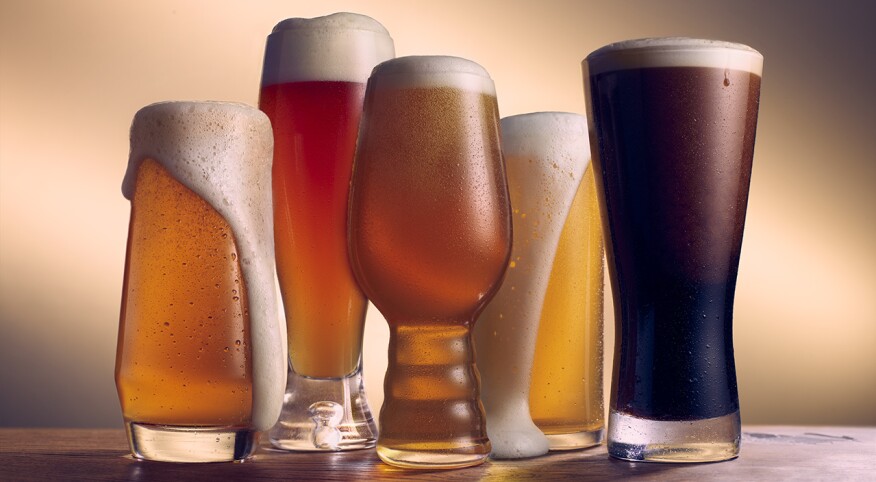I get paid to drink beer.
I literally do it for a living, at my own brewery in Oregon. And because I’m professionally obligated to partake in a never-ending supply of delicious drafts, I have to think about things like calories.
Yes, calories, the last thing any guy wants to hear when it comes to beer. “It’s a tasty brew, but will it go to my waistline?” asked no guy ever. And while low-calorie options have been around for decades … well, you know.
But lately things have changed. There are scores of less-than-mainstream styles that not only have low calorie counts but also taste like actual beer — without the belly. Here are a few I’d drink, even if it weren’t my job.
Berliner Weisse
Alcohol by volume (ABV): 2.5 to 5 percent
Calories per 12 ounces: 80 to 150
Most craft beers zigzag between malty flavors and spicy, citrusy notes. But the Weisse beer of Berlin has perked up palates for centuries with its distinctive lemon curd-like tartness, which comes mainly from lactobacillus, the same benign bacteria that creates top-tier yogurt. Hops are all but undetectable here while a mild, crackery backbone and a thirst-quenching snappiness move to the fore.
Grisette
ABV: 2.7 to 5 percent
Calories per 12 ounces: 80 to 150
While the grisette’s origin story about 18th-century beer tenders and the sooty coal miners who drank it is a bit murky, the “little gray” beer of Belgium has become a U.S. craft-beer-industry breakout. Its closest relative is Belgian saison, and like that mainstay, the grisette’s pale, grassy, wheaty, spicy, aromatic character is calibrated to slake the mightiest thirst.
Kellerbier
ABV: 4.7 to 5.4 percent
Calories per 12 ounces: 125 to 150
Another Old-World standard, kellerbier — or Germany’s unfiltered “cellar beer” — was once obscure on these shores, but now it’s easier to find, thanks to adventurous importers and innovative U.S. brewers. Harking from the beer-soaked region of Bavaria, kellerbier has less bitterness than dry pilsners, but not so much sweetness that you don’t want another sip or three. On the contrary, at 5 to 6 percent alcohol by volume (ABV), it is as low-octane as a standard issue American macro lager but substantial and creamy, with an inviting, hazy gold glow.
Session IPA
ABV: 3 to 5 percent
Calories per 12 ounces: 90 to 150
As the cosmo is to cocktails and oaky California chardonnay to wine, so goes India pale ale (IPA), which has led an industry-wide shift toward fruitier, hoppier flavors. But at 6 to 8 percent ABV, an IPA is not ideal for rinse-and-repeat Saturdays around the barbecue. Enter the session IPA, with a leaner grain backbone, leading to a lower ABV but boasting ample hop heft and aroma to keep things interesting.
Dry Irish Stout
ABV: 3.8 to 5.3 percent
Calories per 12 ounces: 117 to 200
Of all the most pervasive myths in beer, none is more oddly stubborn than the “pork-chop-in-a-glass” status of stouts, which are both lighter and more refreshing than their appearance might suggest. Like coffee beans, which derive their color and flavors from the roast, the brewers’ grains that bring stout its tannic, rich blackness are carefully kilned but no more caloric than paler grains, making a 4 percent, low-cal pint as creamy, rich, chocolaty and satisfying as they come — minus the pork chop.

Travis Rathbone




